Aaron Nola, the esteemed pitcher for the Philadelphia Phillies, commands attention whenever he takes the mound. With his precision pitches and unwavering focus, Nola has established himself as a cornerstone of the Phillies’ pitching staff and a force to be reckoned with in Major League Baseball. At the heart of his dominance lies his Earned Run Average (ERA), a statistic that encapsulates his effectiveness in preventing opposing teams from scoring runs.
Nola’s ERA serves as a barometer of his consistency and skill on the mound, reflecting his ability to navigate through tough situations and keep hitters off balance. As fans eagerly analyze his performance, they look to his ERA as a key indicator of his impact on the game.
From his early days in the minor leagues to his ascent to the majors, Nola has consistently showcased a mastery of his craft, making him a formidable opponent for any lineup. As we delve into the intricacies of Aaron Nola’s ERA, we gain deeper insight into the mind of a pitcher who continues to redefine excellence in the world of baseball.
Table of Contents
What Is ERA in Baseball?
Baseball, often hailed as America’s favorite pastime, is a sport deeply entrenched in statistics and records. Among the multitude of metrics used to analyze player performance and evaluate teams, one of the most fundamental is ERA, which stands for Earned Run Average [1]. For those unfamiliar with the intricacies of baseball statistics, ERA might seem like just another acronym in a sea of baseball jargon, but its significance to the game is immense.
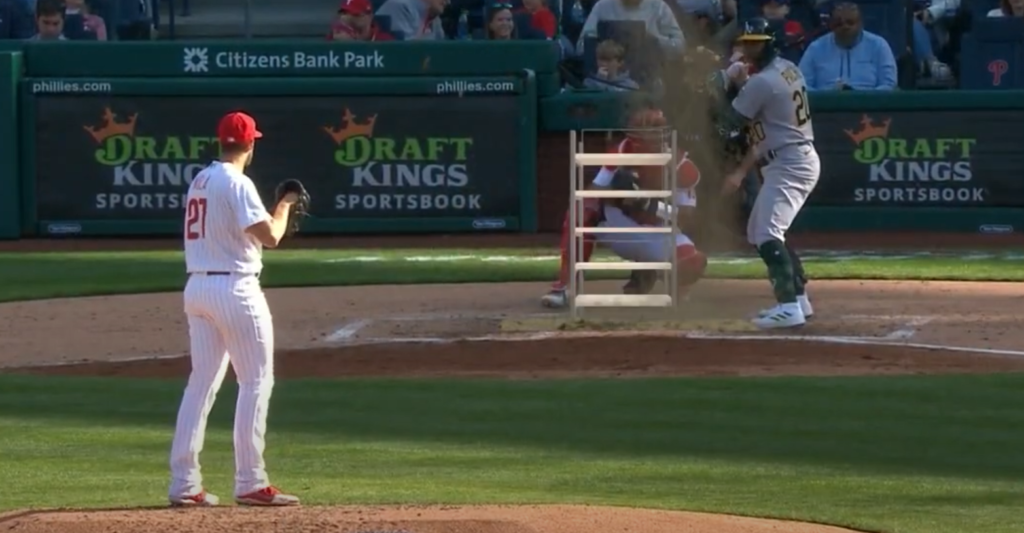
Understanding what constitutes an earned run is crucial to comprehending ERA. An earned run is a run that scores without the aid of an error or passed ball by the fielding team. In essence, it’s a run that the pitcher is deemed responsible for giving up. Conversely, runs resulting from defensive mistakes or other factors beyond the pitcher’s control are considered unearned and not factored into the ERA calculation.
ERA serves as a barometer of a pitcher’s skill and consistency. A low ERA indicates that a pitcher has been effective in keeping opposing teams from scoring, while a high ERA suggests the opposite [2]. It’s not merely a measure of how many runs a pitcher allows but rather how efficiently they do so relative to the number of innings pitched. This nuance is what makes ERA such a valuable tool for evaluating pitchers.
For fans and analysts, ERA provides insight into various aspects of a pitcher’s performance. It can reveal trends over the course of a season, highlighting periods of dominance or struggles. Moreover, ERA can be used to compare pitchers across different teams and eras, offering a historical perspective on the evolution of the game.
In the context of individual accolades and achievements, a low ERA is highly coveted among pitchers. Winning the ERA title, awarded to the pitcher with the lowest ERA in their respective league, is a prestigious accomplishment and often indicative of a stellar season. Pitchers who consistently maintain low ERAs are celebrated for their ability to consistently stifle opposing offenses and give their team a chance to win every time they take the mound.
However, it’s important to recognize that ERA isn’t a perfect measure of a pitcher’s performance. It doesn’t account for factors such as defensive prowess, ballpark effects, or run support provided by the pitcher’s team. Additionally, a single poor outing can significantly inflate a pitcher’s ERA, underscoring the importance of considering larger sample sizes when evaluating performance.
Despite its limitations, ERA remains a cornerstone of baseball statistics, providing valuable insights into the dynamics of the game. Whether debating the merits of a Cy Young Award contender or reminiscing about the dominant pitchers of yesteryear, ERA serves as a common language that unites fans and analysts in their appreciation of the sport.
In essence, ERA encapsulates the essence of pitching in baseball— the delicate balance between skill, strategy, and resilience. It’s a statistic steeped in tradition yet relevant in the modern era, embodying the timeless appeal of America’s favorite pastime. So the next time you hear about a pitcher’s ERA, remember that it’s more than just a number—it’s a reflection of their mastery of the mound and their impact on the game.
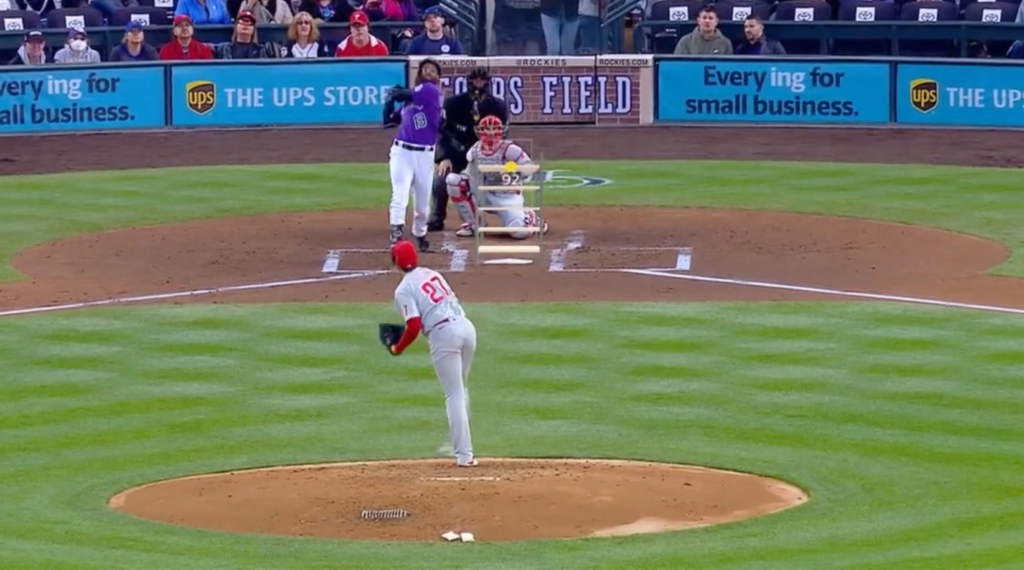
Why Is ERA Stat So Important?
The ERA (Earned Run Average) stat holds significant importance in baseball for several reasons, each contributing to its status as a fundamental measure of a pitcher’s performance:
- Pitcher Effectiveness:At its core, ERA reflects a pitcher’s ability to prevent opposing teams from scoring runs. It measures how many earned runs a pitcher allows per nine innings pitched, providing a standardized metric for evaluating their effectiveness on the mound. A low ERA suggests that a pitcher consistently performs well, while a high ERA indicates struggles in keeping runs off the scoreboard;
- Comparative Analysis:ERA allows for easy comparison between pitchers, both within a single season and across different seasons or eras. By normalizing the number of runs allowed to a nine-inning standard, ERA enables fans, coaches, and analysts to assess pitchers’ performances objectively, regardless of factors like ballpark dimensions or defensive quality;
- Historical Significance:Throughout baseball history, ERA has been a key statistic in identifying dominant pitchers and defining eras of the game. Winning the ERA title is a prestigious accomplishment and often goes hand-in-hand with accolades like the Cy Young Award, signifying excellence over a season. ERA records, such as the lowest single-season ERA or career ERA leaders, are celebrated milestones that highlight the greatest pitching achievements;
- Team Success: Pitching is often regarded as one of the most critical aspects of a team’s success in baseball. A strong pitching staff with low ERAs can significantly contribute to winning games and championships. Therefore, monitoring pitchers’ ERAs helps teams assess their strengths and weaknesses, make strategic decisions regarding pitching rotations and bullpen usage, and ultimately improve their chances of winning;
- Fan Engagement and Analysis: For fans, ERA provides a tangible measure of a pitcher’s performance and contributes to the excitement and intrigue of the game. Analyzing pitchers’ ERAs allows fans to assess their favorite players, engage in debates about their abilities, and appreciate the nuances of pitching strategy. Furthermore, fantasy baseball leagues often use ERA as a scoring category, adding another layer of interest for fans;
- Scouting and Player Development: In player evaluation and development, ERA serves as a valuable tool for coaches, scouts, and talent evaluators. It helps identify promising young pitchers with the potential for success at higher levels of competition and provides benchmarks for assessing progress and performance throughout a player’s career [3];
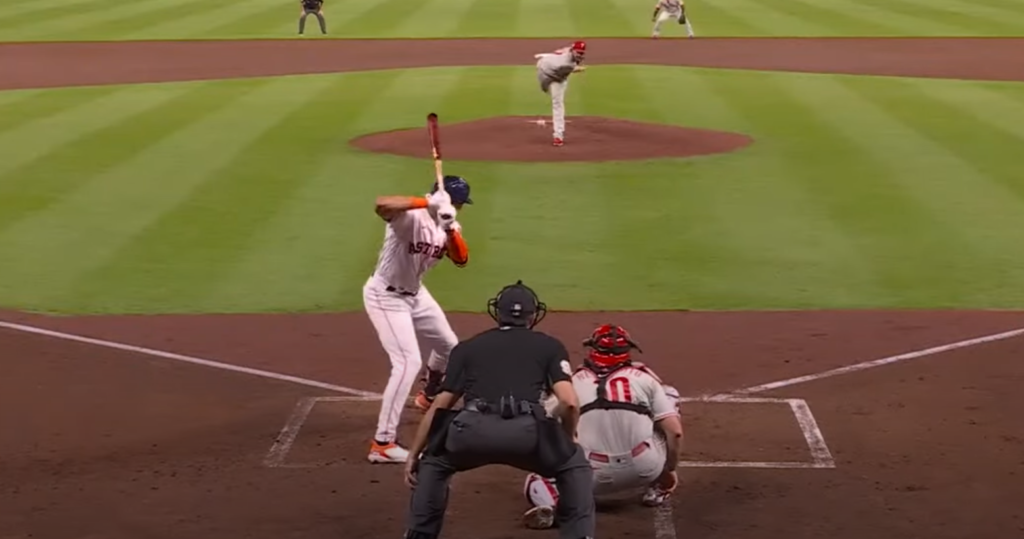
What Is Considered a Good ERA?
In baseball, what constitutes a “good” ERA can vary depending on factors such as the era in which a pitcher is playing, the league, the ballpark they pitch in, and the overall level of offensive production in the league. However, generally speaking, a good ERA is one that is lower than the league average and demonstrates consistent effectiveness in preventing runs.
In Major League Baseball (MLB), the league average ERA typically hovers around 4.00. Pitchers with ERAs significantly below this mark are often considered to be performing well and are valued highly by their teams.
Here’s a rough guideline for what is considered a good ERA:
- Sub-3.00 ERA: Pitchers with ERAs below 3.00 are often considered elite. These pitchers are typically among the best in the league and are strong contenders for awards like the Cy Young. They consistently demonstrate exceptional control, command, and the ability to limit runs;
- 00-3.50 ERA:Pitchers with ERAs in this range are still considered very good. They are often reliable starters who consistently give their team a chance to win. While not necessarily at the elite level, they are highly valued contributors to their teams’ success;
- 50-4.00 ERA: Pitchers in this range are generally considered to be solid contributors to their teams. While not among the elite, they are still effective at keeping runs off the scoreboard and are often relied upon as key members of the pitching staff [4];
- Above 4.00 ERA: ERAs above 4.00 may indicate struggles with consistency or effectiveness, though there can be exceptions depending on various factors. Pitchers with ERAs above 4.00 may still have value to their teams, especially if they excel in other areas such as strikeouts, innings pitched, or limiting walks;
It’s important to note that context is crucial when evaluating ERA. Factors such as ballpark dimensions, defensive support, and league-wide offensive trends can all influence a pitcher’s ERA. Additionally, pitchers who pitch in more hitter-friendly ballparks or face particularly strong offensive opponents may have higher ERAs despite being talented pitchers.

Aaron Nola’s Career:
Early Life and Career
Born on June 4, 1993, in Baton Rouge, Louisiana, Aaron Michael Nola was destined for a future in baseball [5]. Growing up in a sports-loving family, Nola was introduced to the game at a young age, honing his skills on local Little League fields under the guidance of his father, Aaron Sr., who instilled in him a strong work ethic and passion for the sport.
Nola’s talent quickly became apparent as he progressed through the ranks of youth baseball, showcasing an advanced understanding of pitching mechanics and an arsenal of effective pitches that belied his young age. His exceptional control and poise on the mound caught the attention of scouts and coaches alike, foreshadowing a promising future in the game.
College Career at LSU
Nola’s path to baseball stardom reached new heights when he enrolled at Louisiana State University to play for the LSU Tigers baseball team. Under the guidance of legendary head coach Paul Mainieri, Nola flourished on the collegiate stage, solidifying his status as one of the top pitching prospects in the nation.
During his three-year tenure at LSU, Nola distinguished himself as a dominant force on the mound, posting impressive statistics and earning numerous accolades along the way. His sophomore and junior seasons, in particular, showcased his exceptional talent and leadership abilities, propelling LSU to new heights of success in collegiate baseball.
In his sophomore year, Nola emerged as the ace of the Tigers’ pitching staff, compiling a stellar 12-1 record with a 1.57 ERA and 122 strikeouts in 126.0 innings pitched [6]. His outstanding performance earned him recognition as a consensus First Team All-American and a finalist for the Golden Spikes Award, given annually to the top amateur baseball player in the country.
Building on his sophomore success, Nola continued to excel in his junior season, further solidifying his status as one of college baseball’s premier talents. He finished the season with an 11-1 record, a 1.47 ERA, and 134 strikeouts in 116.1 innings pitched, cementing his legacy as one of the greatest pitchers in LSU history.
Professional Career:
Minor Leagues
Following his selection by the Philadelphia Phillies with the seventh overall pick in the 2014 MLB Draft, Aaron Nola wasted no time in making an impact in the minor leagues. He quickly rose through the ranks of the Phillies’ farm system, showcasing his exceptional talent and earning praise from coaches, scouts, and teammates alike.
In the minor leagues, Nola’s pitching prowess was on full display as he consistently dominated opposing hitters with his impressive repertoire of pitches and advanced command. His ability to induce ground balls, generate swings and misses, and navigate through tough situations highlighted his maturity and poise on the mound, setting the stage for his eventual ascent to the majors.
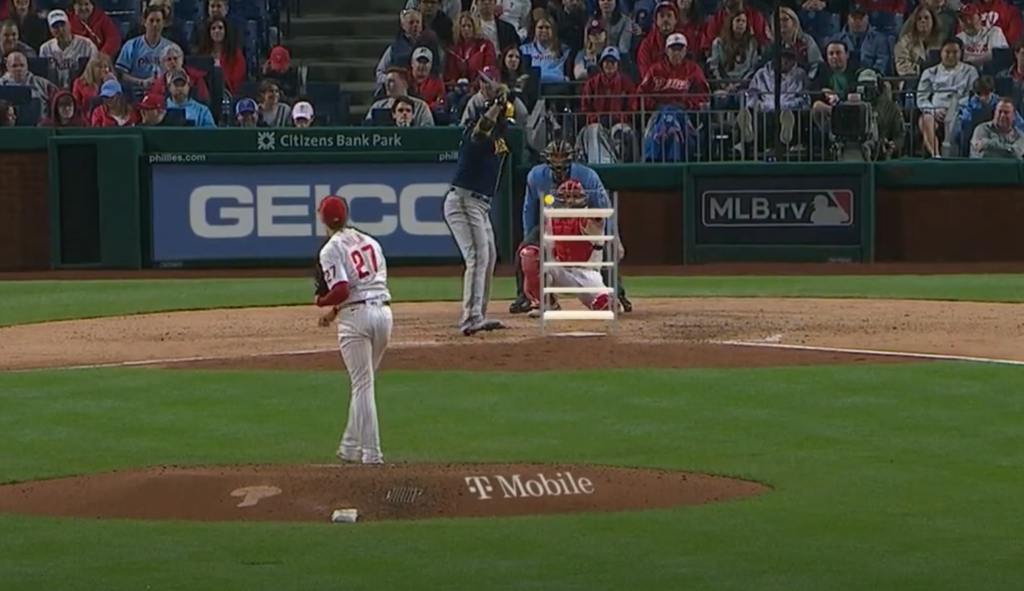
Philadelphia Phillies (2015 – 2023)
Nola’s highly anticipated MLB debut came in August 2015, as he took the mound for the Philadelphia Phillies amidst high expectations and excitement from fans and teammates alike. From the outset, Nola proved that he belonged at the highest level, showcasing his trademark control, intelligence, and competitive fire in each start.
Over the course of his tenure with the Phillies, Nola emerged as a cornerstone of the team’s pitching staff, earning recognition as one of the most consistent and reliable starters in the league [7]. His ability to deliver quality starts, work deep into games, and keep opposing hitters off balance made him a valuable asset for the Phillies and a fan favorite in Philadelphia.
Throughout his professional career, Nola’s accomplishments on the mound have been nothing short of impressive. He has earned numerous accolades and honors, including multiple selections to the MLB All-Star Game and consideration for prestigious awards such as the Cy Young Award, which recognizes the best pitcher in each league.
Pitching Style
At the heart of Aaron Nola’s success as a pitcher is his unique and highly effective pitching style, characterized by a combination of pinpoint control, a diverse repertoire of pitches, and a keen understanding of opposing hitters’ tendencies.
Nola’s arsenal includes a four-seam fastball, a two-seam fastball, a devastating curveball, a deceptive changeup, and a slider, each thrown with precision and purpose to keep hitters off balance and guessing. His ability to command each pitch and locate them with precision allows him to consistently generate weak contact, induce ground balls, and record strikeouts when needed.
Moreover, Nola’s intelligence and strategic approach to pitching set him apart from his peers. He studies opposing hitters meticulously, identifying their strengths and weaknesses and exploiting them to his advantage on the mound. Whether it’s changing speeds, mixing up pitch sequences, or hitting his spots with pinpoint accuracy, Nola consistently outthinks and outmaneuvers hitters, showcasing a veteran’s savvy despite his relatively young age.
Aaron Nola’s Stats
Aaron Nola, the Philadelphia Phillies’ ace pitcher, has garnered widespread acclaim and admiration for his exceptional performance on the mound. His statistics paint a picture of a pitcher who consistently delivers excellence, earning him recognition as one of the premier pitchers in Major League Baseball (MLB).
Dominance in the Strikeout Department
One of the most impressive aspects of Aaron Nola’s game is his ability to rack up strikeouts with remarkable consistency. Throughout his career, Nola has showcased an impressive strikeout rate, routinely baffling opposing hitters with his diverse arsenal of pitches.
Since his MLB debut in 2015, Nola has recorded an impressive strikeout-to-walk ratio, a testament to his exceptional command and ability to overpower hitters. His ability to generate swings and misses with his devastating curveball and well-placed fastballs has made him a formidable presence on the mound, capable of shutting down even the most potent offenses.
Exceptional Control and Command
Another standout feature of Nola’s pitching prowess is his exceptional control and command. Throughout his career, Nola has consistently demonstrated the ability to locate his pitches with pinpoint accuracy, rarely issuing walks or allowing free passes to opposing hitters.

Nola’s ability to paint the corners of the strike zone and induce weak contact has allowed him to keep hitters off balance and work deep into games with efficiency. His low walk rate and ability to limit baserunners have been instrumental in his success and have earned him a reputation as one of the most reliable starters in the league.
Consistency and Durability
Perhaps most impressive of all is Nola’s remarkable consistency and durability on the mound. Despite the rigors of a long MLB season, Nola has proven to be a workhorse for the Phillies, regularly taking the ball every fifth day and delivering quality starts with remarkable frequency.
Whether it’s pitching deep into games, navigating through tough situations, or bouncing back from adversity, Nola has demonstrated a resilience and toughness that sets him apart from his peers. His ability to rise to the occasion in critical moments and deliver clutch performances has endeared him to Phillies fans and earned him the respect of his teammates and opponents alike.
Awards and Accolades
Nola’s outstanding performance on the mound has not gone unnoticed, as evidenced by the numerous awards and accolades he has received throughout his career. He has been selected to multiple MLB All-Star Games, showcasing his status as one of the top pitchers in the league.
Furthermore, Nola has garnered consideration for prestigious awards such as the Cy Young Award, which recognizes the best pitcher in each league. His impressive statistical resume and impact on the field have positioned him as a perennial contender for this prestigious honor, further solidifying his place among the elite pitchers in baseball.
Legacy and Impact
As Aaron Nola continues to etch his name into the annals of baseball history, his statistics serve as a testament to his remarkable talent, work ethic, and dedication to his craft. With each start, he adds to his legacy as one of the most dominant pitchers of his generation, leaving an indelible mark on the game and inspiring future generations of pitchers to follow in his footsteps.

What ERA Does Aaron Nola Have?
Across his career, Nola has racked up 90 wins against 71 losses. However, what truly sets a pitcher apart is their Earned Run Average (ERA) [8]. The ERA is a standard statistic used in baseball to measure a pitcher’s effectiveness. It’s calculated by dividing the total number of earned runs allowed by the number of innings pitched, then multiplying by nine. The lower a pitcher’s ERA, the better they have performed.
In the case of Nola, despite his higher season ERA, he still managed to secure 12 wins against 9 losses. Furthermore, he recorded an impressive 202 strikeouts, tying him for 14th place among pitchers. This indicates that even though Nola’s ERA was higher than his career average, he still contributed significantly to the Phillies’ pitching efforts.
Nola’s WHIP (Walks plus Hits per Inning Pitched), another critical statistic for evaluating a pitcher’s performance, stood at 1.15 for the 2023 season. This number, ranking him at 16th, suggests that he was effective at preventing opposing players from getting on base.
When we look at Nola’s performance throughout his career, there’s no denying his talent and consistency. His career ERA of 3.72, accumulated over nine seasons and 235 games, speaks volumes about his skill as a pitcher [9]. It’s also worth noting that he has pitched an impressive 1422.0 innings across his career, further solidifying his position as a mainstay in the Phillies’ rotation.
How Can He Improve His ERA?
Improving one’s Earned Run Average (ERA) in baseball is a complex process that requires both individual skill and effective teamwork. Aaron Nola, despite his ERA of 4.46 in 2023, remains a talented and formidable pitcher [10].
However, there are several strategies he could employ to further refine his ERA:
- Consistency:Good pitching leads to a more stable ERA. A pitcher who consistently delivers high-quality performances will naturally have a lower ERA. This means maintaining focus, refining pitching techniques, and ensuring physical fitness;
- Understanding the Opponent:A deep understanding of the opposing team’s batters can significantly improve a pitcher’s effectiveness. By studying their strengths, weaknesses, and habits, a pitcher can adjust their strategy to exploit these factors;
- Defense Support:While the pitcher plays a crucial role, the defense also significantly impacts the ERA. Poor defense can extend innings, indirectly causing a pitcher’s ERA to rise. Thus, having a strong and reliable defense can help lower a pitcher’s ERA;
- Limiting Walks and Hits:The WHIP (Walks plus Hits per Inning Pitched) statistic directly impacts the ERA. By limiting the number of walks and hits allowed, a pitcher can effectively lower both their WHIP and ERA;
- Bouncing Back from Errors:Errors can lead to unearned runs, which do not count towards a pitcher’s ERA. However, they can extend innings, giving the opposition more opportunities to score earned runs. Therefore, a pitcher needs to recover quickly from errors and limit their impact;
- Effective Relief Pitching:Relief pitchers can also influence a starting pitcher’s ERA. If a starting pitcher exits the game with runners on base, any earned runs scored by those runners will count towards the starting pitcher’s ERA. Therefore, effective relief pitching can help protect a starting pitcher’s ERA;
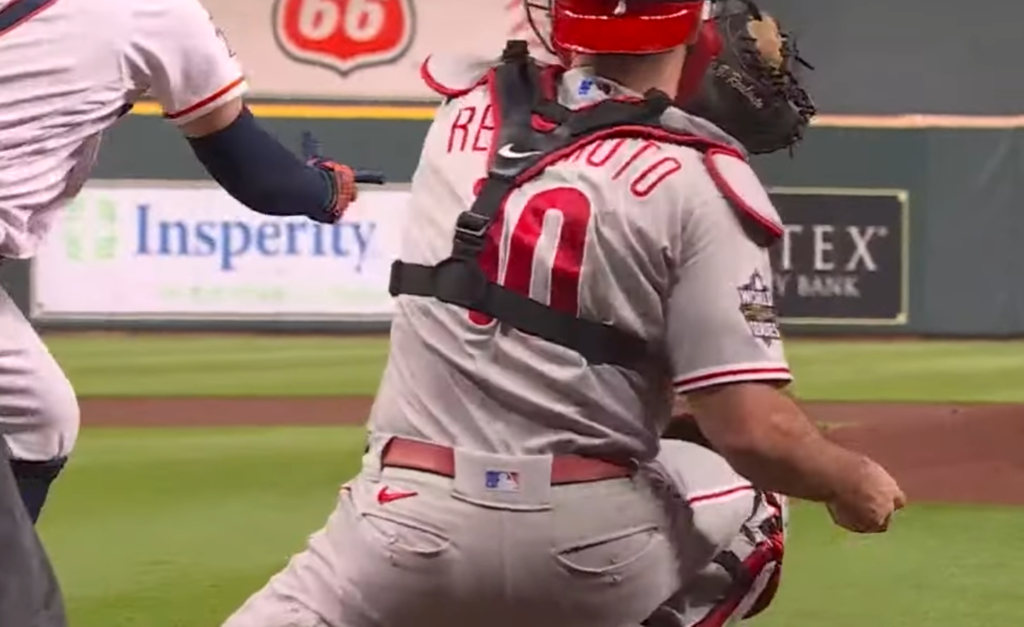
FAQ:
What is Aaron Nola’s post-season ERA?
Aaron Nola’s post-season ERA varies depending on the specific series or game. As of the latest available data, Nola has maintained a competitive ERA in playoff appearances.
What year was Aaron Nola a rookie?
Aaron Nola made his MLB debut as a rookie in the year 2015 with the Philadelphia Phillies.
How fast is Nola’s fastball?
Aaron Nola’s fastball typically ranges between 92-95 miles per hour (mph), though it can vary depending on game conditions and strategy.
How fast does Realmuto throw?
J.T. Realmuto is a catcher, and while he has a strong arm for throwing out baserunners attempting to steal, his pitching speed is not measured in terms of fastball velocity.
Is 75 mph fast for a baseball player?
A pitch velocity of 75 mph can be considered fast for some youth or amateur players, but it is relatively slower at the professional level [11].
How fast should a 10-year-old throw a baseball?
The average pitching velocity for a 10-year-old player is typically around 40-50 mph, though this can vary depending on factors such as size, strength, and experience.
Is Nola a good pitcher?
Yes, Aaron Nola is widely regarded as a highly skilled and effective pitcher in Major League Baseball, known for his command, repertoire of pitches, and ability to generate strikeouts.
What is Aaron Nola’s record?
Aaron Nola’s win-loss record varies from season to season and can be influenced by factors such as run support, bullpen performance, and defensive support. He has maintained a competitive record throughout his career.
How many strikeouts does Nola average?
Aaron Nola’s average number of strikeouts per game varies, but he consistently ranks among the league leaders in strikeouts due to his impressive strikeout rate.
Is Aaron Nola retiring?
There have been no announcements or indications that Aaron Nola is retiring. He continues to pitch for the Philadelphia Phillies in the MLB.
What does Aaron Nola earn?
Aaron Nola’s salary is determined by his contract with the Philadelphia Phillies, which includes various factors such as base salary, bonuses, and incentives.
Who does Aaron Nola pitch for?
Aaron Nola is a pitcher for the Philadelphia Phillies in Major League Baseball.
What team drafted Aaron Nola?
Aaron Nola was drafted by the Philadelphia Phillies in the first round of the 2014 MLB Draft.
How many pitches did Nola throw?
The number of pitches Aaron Nola throws in a game varies depending on factors such as pitch efficiency, game situation, and pitch count limits set by the coaching staff.
What is MLB WHIP?
WHIP stands for “Walks plus Hits per Inning Pitched” and is a statistic used to measure a pitcher’s effectiveness in preventing baserunners. It is calculated by dividing the total number of walks and hits allowed by the total number of innings pitched.
Why is Aaron Nola struggling?
Aaron Nola’s performance fluctuations can be influenced by various factors such as mechanical adjustments, opposing hitters’ adjustments, and personal or physical factors. Like all athletes, pitchers go through periods of success and challenges, and Nola is no exception.
Useful Video: The evolution of Aaron Nola
References:
- https://en.wikipedia.org/wiki/Aaron_Nola
- https://www.mlb.com/player/aaron-nola-605400
- https://www.baseball-reference.com/players/n/nolaaa01.shtml
- https://www.espn.com/mlb/player/_/id/33709/aaron-nola
- https://www.milb.com/player/aaron-nola-605400
- https://www.statmuse.com/mlb/player/aaron-nola-43387
- https://baseballsavant.mlb.com/savant-player/aaron-nola-605400?stats=statcast-r-pitching-mlb
- https://whyy.org/articles/philadelphia-phillies-aaron-nola-pitcher-contract-agreement/
- https://www.espn.com/mlb/player/stats/_/id/33709/aaron-nola
- https://www.sportsnet.ca/mlb/article/reports-phillies-re-sign-aaron-nola-to-seven-year-172-million-deal/
- https://www.cbssports.com/mlb/news/aaron-nola-re-signs-with-phillies-pitcher-returns-to-philly-for-seven-years-172-million/






Leave a Reply